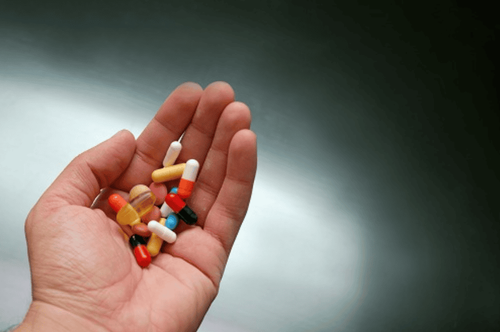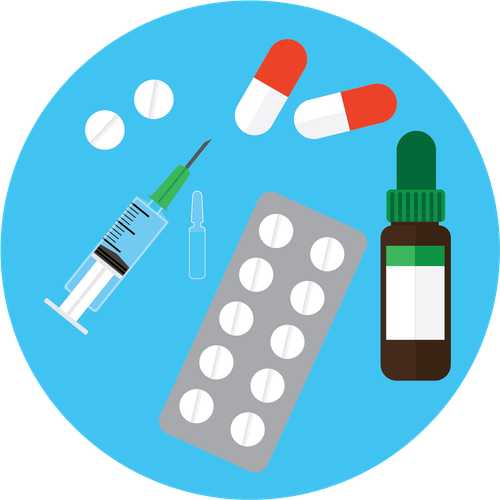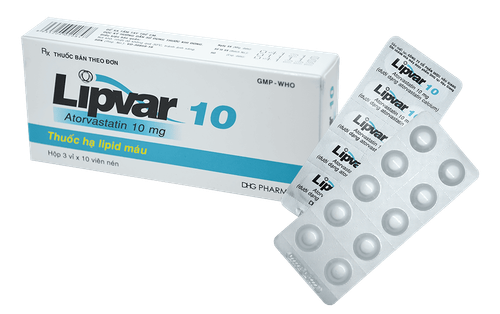This is an automatically translated article.
Mixed dyslipidemia is a combination of increased total cholesterol, increased cholesterol - low-density lipoprotein (LDL-C) with increased triglycerides and decreased cholesterol - high-density lipoprotein (HDL-C). The cause of this condition can be due to some genetic disorders, diabetes, taking immunosuppressive drugs, ...1. Causes of mixed dyslipidemia
1.1. Causes of primary dyslipidemia Due to genetic mutations that increase the synthesis of total cholesterol (TC), triglyceride (TG), LDL-C or decrease clearance of TC, TG, LDL-c or decrease the synthesis of HDL- c or increased clearance of HDL-L.
Primary mixed dyslipidemia often occurs early in children and young people including the following cases:
In the family there are many people with the same dyslipidemia, which is an inherited condition. Subjects have increased synthesis or decreased degradation of lipoproteins. Clinically, often obesity, yellow tumor or yellow rash on the skin or on the tendons, insulin resistance diabetes, patients with hyperuricemia. 1.2. Causes of secondary dyslipidemia The cause of mixed dyslipidemia is secondary to a sedentary lifestyle, consuming a lot of beer, alcohol, and foods rich in saturated fat. Diabetes: Due to decreased lipoprotein lipase enzyme activity, it often causes hypertriglyceridemia. Hypercortisolism (Cushing's syndrome): Due to decreased lipoprotein lipase enzyme activity, decreased catabolism of lipoproteins causes mixed hyperlipidemia. Use of Estrogen: Women who use estrogen for a long time will have an increase in Triglyceride (TG) due to increased synthesis of VLDL. During pregnancy, estrogen levels increase, thereby increasing TG levels 2-3 times normal and after about 6 weeks, TG levels will return to normal. Alcoholism: mixed blood lipid disorders, mainly increased triglycerides (TG). Renal disease: In nephrotic syndrome, VLDL and LDL-C are increased due to increased hepatic synthesis and decreased blood protein levels due to urinary excretion of protein. Due to the decrease in blood albumin, the free fatty acids attached to albumin also decrease, increasing free fatty acids in the blood, these free fatty acids attach to lipoproteins, causing TG hydrolysis of these lipoproteins to be reduced, causing an increase TG.
2. How to treat mixed dyslipidemia?
2.1. General principles of treatment of mixed dyslipidemia Treatment of mixed dyslipidemia requires a combination of lifestyle changes and medication. Lifestyle changes are mandatory and a top priority, including increasing physical activity, especially those with sedentary work, combined with adjusting a reasonable diet to the patient's condition and nature. Work. Today, to choose an appropriate treatment plan, experts often rely on the third report of the National Cholesterol Education Program in the United States (NCEP), the Committee on the Treatment of High Cholesterol in Humans. Adults (ATP III-Adult Treatment Panel III) and NCEP guidelines are based on the relative risk of clinical coronary artery disease. 2.2. Statins (HMG-CoA reductase inhibitors)
Effects: Inhibits total cholesterol synthesis (TC), reduces endogenous TC, in addition, statins also stimulate increased receptor synthesis low-density lipoprotein cholesterol (LDL-C) should increase the retention of LDL-C in the liver. The result is a decrease in LDL-C, VLDL, TC, Triglyceride (TG) and an increase in high-density lipoprotein cholesterol (HDL-C). The statin group also increases the synthesis of nitric oxide (ON) of the endothelial cells, reduces the inflammatory process of the vascular endothelium, and helps in the degeneration of atheroma. Some commonly used drug names and dosages:
Atorvastatin: 10-20mg/day, maximum dose 80mg/day. Rosuvastatin: 10-20mg/day, maximum dose 40mg/day. Simvastatin: 10-20mg/day, maximum dose 80mg/day. Lovastatin: 20-40mg/day, maximum dose 80mg/day. Indications: increase LDL-c, increase TC. Undesirable effects of statin drugs: Increases muscle enzymes when taking high doses of statins, or using drugs in the elderly, or patients taking many drugs such as macrolide antibiotics. Use statins with caution in patients with liver disease. Fibrate group
Effects: Increase fatty acid oxidation, increase LPL enzyme synthesis, increase clearance of lipoproteins rich in Triglyceride (TG). Fibrates inhibit the synthesis of apoC-III in the liver and promote the expression of apoA-I and apoA-II, thereby increasing VLDL clearance and increasing HDL-C.
Some commonly used drug names and dosages:
Gemfibrozil: 600 mg/day. Clofibrate: 1000 mg/day. Fenofibrate: 145mg/day. Indications for treatment: increase TG. Undesirable effects of the drug group Fibrate: Digestive disorders, abdominal distension, flatulence, nausea, increased liver enzymes, increased risk of gallstones, increased muscle enzymes (CK enzymes), rash. Side effects often occur in subjects taking high doses, the elderly, or people with previous liver and kidney disease. Fibrate drugs increase the effect of anticoagulants, especially vitamin K antagonists, not for people with liver failure, kidney failure, pregnant and lactating women. Nicotinic acid group (Dilexpal, Novacyl).
Effect: The drug inhibits the breakdown of fat and reduces the synthesis of Triglyceride (TG) in the liver, thereby reducing the concentration of TG in the blood. In addition, the Nicotinic acid group also inhibited fatty acid synthesis and esterification in the liver and increased apoB degradation, decreased apoA-I clearance, resulting in a decrease in VLDL, a decrease in LDL-C, and an increase in HDL-C. Indications: Patients with increased triglycerides (TG), increased LDL-C, decreased HDL-C. Use high dose: 2-6g/day. Undesirable effects: facial flushing, itching, digestive disorders, abdominal distension, flatulence, nausea, mild decrease in liver function, increased liver enzymes, gallstones, increased muscle enzymes, rash, increased insulin resistance . Due to high doses and many undesirable side effects, the drug is rarely used in our country today. Resin group - essentially ion exchange resins
Effects: Oral drugs are not absorbed through the intestinal mucosa, are not affected by digestive enzymes, are able to exchange Cl ions with bile acids, bile acids when in The bound form is not reabsorbed but is excreted in the feces. Resin group cuts the enterohepatic cycle of bile acids and lowers cholesterol, LDL-C, slightly increases HDL-C Some commonly used names and dosages: Cholestyramine: Dose 4 -8 g/day, maximum 32 mg/day. day.
Colestipol dose: Dose 5 -10 g / day, maximum 40 mg / day.
Colesevelam: Dose 3750g/day, maximum 4375mg/day.
Indicated in case of increased LDL-c, cholesterol. Undesirable effects: Digestive disorders such as bloating, flatulence, nausea, constipation, interfere with absorption of lipid-soluble vitamins and some other drugs when passing through the intestines (such as anticoagulants, thyroid hormone). , the cardiovascular drug digitalis). Contraindications: Liver failure, bile duct obstruction, severe constipation. Ezetimibe
Effect: Ezetimibe inhibits the absorption of total cholesterol (TC) in the intestine, thereby reducing TC, LDL-C. Indications: increased LDL-c. Undesirable effects: Ezetimibe drugs rarely cause unwanted side effects, may experience increased liver enzymes. Dosage: 10mg/day. Omega 3 unsaturated fatty acids (Fish Oils, Maxepa)
Effect: Extracting Omega 3 unsaturated fatty acids from marine fish, has the effect of reducing triglycerides and blood VLDL. Slightly lower total cholesterol (TC), LDL-C, slightly increase HDL-C (not as effective as Fibrate), reduce the risk of thrombosis due to the effect on prostaglandin metabolism. Indications: Increase total cholesterol, triglycerides, LDL-C Usual dose: 3g/day, maximum dose 6g/day. Mixed dyslipidemia is a combination of elevated total cholesterol, elevated low-density lipoprotein cholesterol (LDL-C) with elevated triglycerides and decreased high-density lipoprotein cholesterol (HDL-C). The main treatment is adjusting the diet, increasing physical activity, doing sports, keeping the weight stable within the normal range is the most important measure, along with the use of drugs to regulate the blood lipid composition. If mixed dyslipidemia is secondary, it is necessary to thoroughly treat the underlying cause and manage the associated medical condition well.
If you have any questions about mixed dyslipidemia, patients can go to Vinmec General Hospital to be examined and consulted by a team of expert doctors.
Please dial HOTLINE for more information or register for an appointment HERE. Download MyVinmec app to make appointments faster and to manage your bookings easily.













